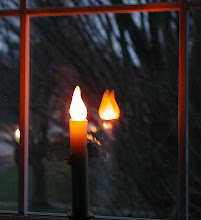Quintuple star system 1SWASP J093010.78+533859.5 in the centre.
Centre de données astronomiques de Strasbourg
Those are the names of the six suns in the novel Nightfall by Isaac Azimov.
Wikipedia: Nightfall (Asimov short story and novel)
"Nightfall" is a 1941 science fiction short story by Isaac Asimov about the coming of darkness to the people of a planet [named Kalgash in the novel, Lagash in the short story] ordinarily illuminated at all times on all sides. It was adapted into a novel with Robert Silverberg in 1990. The short story has been included in 48 anthologies, and has appeared in six collections of Asimov's stories.[citation needed] In 1968, the Science Fiction Writers of America voted Nightfall the best science fiction short story written prior to the 1965 establishment of the Nebula Awards, and included it in The Science Fiction Hall of Fame Volume One, 1929-1964.[...]
The short story was published in the September 1941 issue of Astounding Science Fiction magazine under editor John W. Campbell. It was the 32nd story by Asimov, written while he was working in his father's candy store and studying at Columbia University. According to Asimov's autobiography, Campbell asked Asimov to write the story after discussing with him a quotation from Ralph Waldo Emerson:
If the stars should appear one night in a thousand years, how would men believe and adore, and preserve for many generations the remembrance of the city of God!
Campbell's opinion to the contrary was: "I think men would go mad."
Onos – Yellow dwarf – similar to the Sun
Dovim – Red dwarf
Trey and Patru – Class A or F Main Sequence Stars, described as "white" – binary star system
Tano and Sitha – Class A, B or O Main Sequence Stars, described as "blue" – binary star system
The Last Sun is Eclipsed, Bathing the Observatory of Kalgash in Darkness
And today
Astronomers have found the very first quintuple star system consisting of two sets of eclipsing binary stars and one solo star.
by Michelle Starr July 8, 2015 10:53 PM PDT
http://www.cnet.com/news/astronomers-make-first-five-star-find/
Five stars are inextricably linked in a star system unlike any that has been seen before.Just one more Red Dwarf and we'd have six stars.
Located just 250 light-years from Earth in the constellation of Ursa Major, the system 1SWASP J093010.78+533859.5 was the subject of a 2013 study led by Marcus Lohr of the Open University in the UK. At the time, Lohr and his team thought the system consisted of four stars -- two binary stars gravitationally locked together, which would have been rare enough in itself.
Presenting at the UK Royal Astronomical Society's National Astronomy Meeting 2015 in Wales on July 8, Lohr revealed that the system actually consists of five stars -- two binaries and fifth lone star -- the first of its kind ever identified.
The two binaries, as Lohr and his team noted in the 2013 paper, are a type of binary called an eclipsing binary. These are binary stars that orbit around each other so that they eclipse each other in our line of sight from Earth, blocking some or all of the other star's light.
The team identified these stars from archived data from the SuperWASP project. This uses low-coast cameras located in the Canary Islands and South Africa to image almost the whole sky every few minutes. Although the data is low-res, it provides an accurate measurement of the brightness of stars over time...
The viability of such a system has been investigated:
https://www.themittani.com/news/physicists-test-viability-nightfall-planet
and in arxiv.org:
arxiv.org/pdf/1407.4895
Life imitates Art.
--



















No comments:
Post a Comment